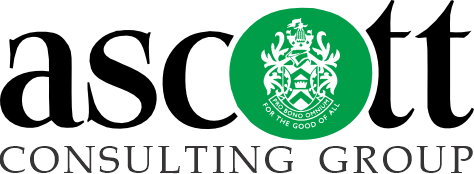Are the good times for nonprofit fundraisers, if not back, at least on the horizon? More than four in 10 (46%) who were surveyed said their overall revenue had increased during the past 12 months, while just more than one-third (34%) said their revenue had remained the same.
A plurality (44%) indicated they met their revenue goals for the year. Even better, 31% said they exceeded their revenue goals for the year, according to a new data from Blackbaud Institute, a research lab under the aegis of Charleston, South Carolina-based software provider Blackbaud. Just less than one in five (17%) said their revenue had dropped during the past year.
If the financial picture from the past 12 months is cautiously positive, looks ahead are sunnier. More than half (53%) of those surveyed anticipate increases to their revenue, while just under one third (32%) believe their revenue will remain the same. And only 9% see their revenue as dropping.
Those nonprofit leaders who report good times either ahead or in the here and now attributed their improved and improving situations to a variety of factors, including jumps in major gifts, bringing new revenue streams online, improvements in teamwork and overall staff talent and the use of better analytics, according to The Resilient Nonprofit: A Report on Fundraising Revenue Streams and Outcomes.
There are other indications of optimism. During boom times, fundraisers (as do most marketers) are more likely to increase attention on acquisition efforts and reduce their focus on retaining donors. The past 12 months were no exception, with 40% reporting increasing retention efforts, 18% saying their efforts had stayed steady, and 34% indicating they had pulled back on these endeavors. In contrast, only 29% had increased their retention efforts, while nearly half (46%) said they had cut back on retention marketing.
Aside from indications of optimism, there is at least one solid trend. Overall, three in 10 respondents reported boosting the number of individuals within their development staffs. Among those reporting they surpassed their revenue goals, 36% increased headcount. Conversely, among the leaders who said they did not achieve their revenue goals, only 22% had added to their development staffs.
Slightly more than one-fourth (26%) of the leaders surveyed said they considered their organizations early adapters of technology. Within this group, 41% reported exceeding their fundraising goals, compared with 31% overall. Furthermore, nearly six in ten (57%) said their organizations had achieved higher total revenue, compared with 46% overall.
Early technology adaptation appears to correlate with boosts to major giving efforts, according to the report’s authors. Among those describing themselves as early adapters, nearly 60% said they had experienced greater success in efforts directed at major donors, compared with 35% overall. Furthermore, 58% of the early adapters said they had shaken more money loose from donor-advised funds (DAFs), while only 43% of nonprofit leaders overall indicated revenue from this stream had increased.
“Given the dominant role of major giving in recent years’ fundraising performance, this could be a significant argument for earlier tech adoption,” the report authors argue. But, which tech? Artificial intelligence (AI) has increasingly moved into the discussion. Just over one in five respondents (22%) have augmented their writing efforts, such as grant proposals, annual appeals, ad creation, social media posts through the use of AI. And a few mentioned AI-enhanced door stewardship efforts and predictive modeling.
Regardless of whether a given nonprofit has experienced heightened fundraising success or is just keeping steady — or is even experiencing declines — organizations continue to diversify their revenue streams, with respondents indicating they pull revenue from between 15 and 17 channels. Websites (85%), direct mail (82%) and email solicitations (80%) make up the top three most-common avenues, followed by bequests (73%), DAFs (70%), foundation grants (69%) and social media (68%). That last may grow as younger funders age into their prime giving years and nonprofits realize the benefits of being in these donors’ online presences.
Other oft-cited revenue streams include stocks (66%), galas and parties (64%), IRAs and retirement plans (63%) and honor or tribute giving (57%).
The report authors recommend nonprofit leaders, especially those who manage fundraising operations, periodically take a critical look at fundraising operations and streams. “As you develop strategies for resiliency, taking advantage of the current growth in the sector, critically analyze which revenue streams are performing best for your organization and where you may have gaps to fill,” they write.
Part of this analysis might include reviewing the efficacy of short- and longer-term investments. “As we move into a space of greater stability, now is the time to consider longer-term investments. Create opportunities to build community with Gen Z and Millennial supporters by increasing your social media presence (organically and thoughtfully), expanding events, strengthening, or building partnerships with workplace volunteer programs,” they added.
And above all, be open to “the new” — a suggestion that comes with its own set of challenges and rewards. “We’ve found that early technology adopters are significantly more likely to say they exceeded their fundraising targets, raised more money, had greater success with major gifts, and enjoyed greater success in numerous fundraising channels than the group as a whole,” the report authors wrote. “This adoption is made possible through strong change management practices.”
The report’s findings from an online survey commissioned by Blackbaud. Between September 14 and October 16, 2023, 215 nonprofit professionals answered a series of questions regarding the most recent financial year during the time the survey was fielded.
